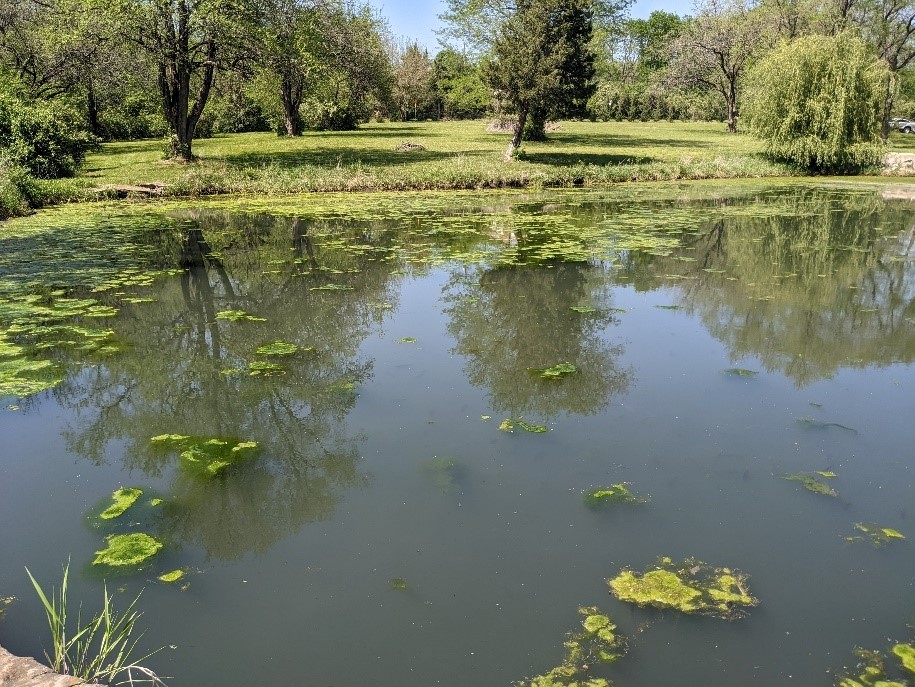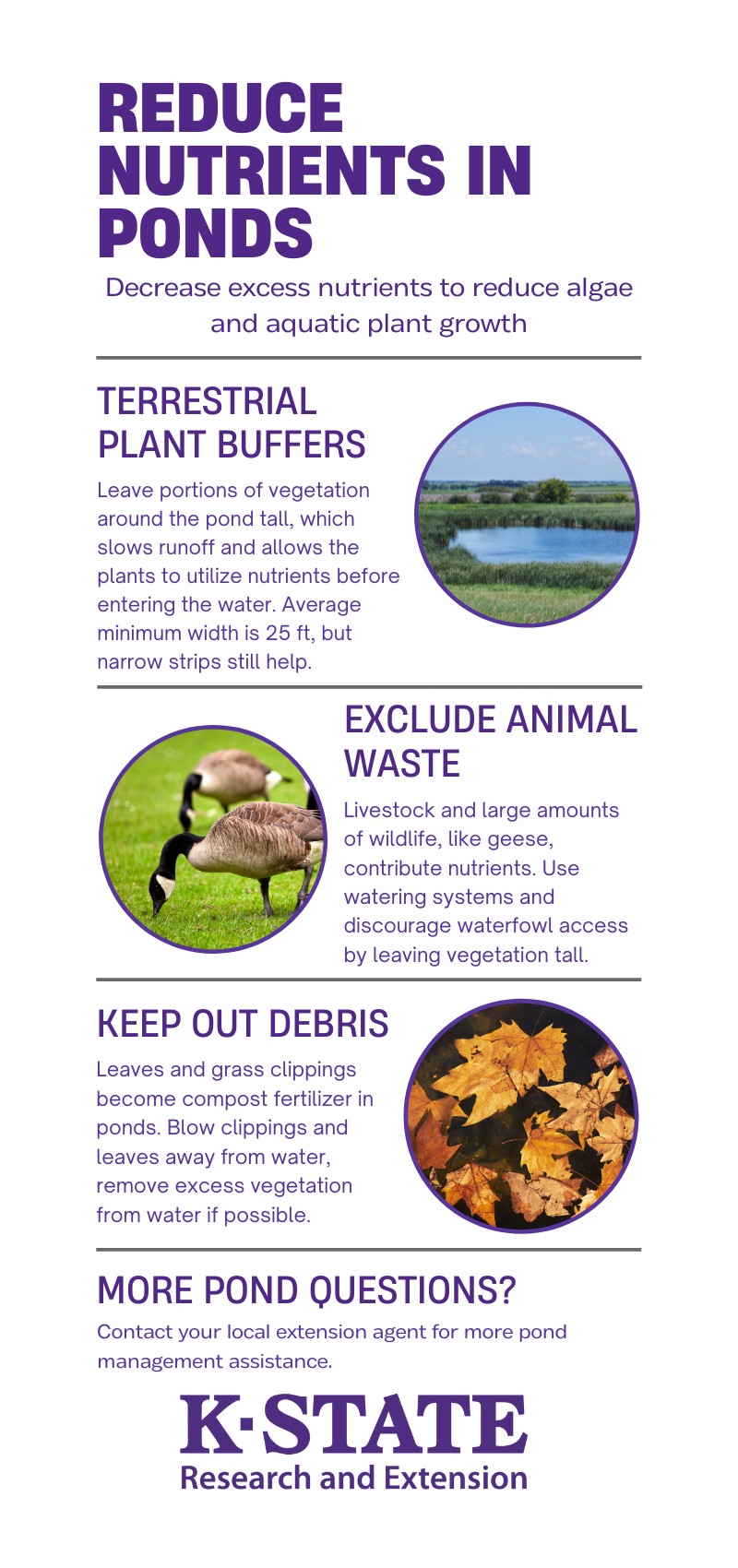Aquatic Vegetation Control
Return to Natural Resources Agent Articles
The growing season in here, people are adding fertilizers to their crops and lawns, spring rains are filtering into streams and ponds, the days have warmed up and the plants are getting green. Not only are the trees and lawns greening up, but so are many ponds. Concerned pond owners often want to know how to get rid of the aquatic vegetation and algae that’s growing in the water. Unfortunately, no matter how many chemicals you apply, plants you rake out, or fish you put in, the problems will not get fixed unless you address the underlying cause.
Most of our ponds have excess nutrients in them. These excess nutrients are floating around waiting for the plants and algae in your pond to use them to grow. To further complicate the issue, nutrients don’t usually come from only one source. They come from the fertilizer applied up the street, grass clippings blown into the gutters and washed into the neighborhood detention pond, leaves falling from the trees in the autumn, and all the other organic matter that decays in the water and creates a layer of nutrient-rich “muck” on the bottom.
There are steps you can take to assist in reducing the nutrient load in your pond by preventing it from getting there in the first place.
- Allow terrestrial plant buffers to grow around waterways. Leaving vegetation tall allows it to slow down water and sediment and use the nutrients trapped within.
- Exclude animal waste from domestic livestock, pets, or wildlife. Watering systems for large animals prevents them from adding waste directly to ponds, pet waste stations prevents owners from leaving waste around greenspaces, and wildlife can be discouraged from loitering and leaving waste around ponds and parks.
- Keep out organic material debris like leaves and grass clippings. Blow them away from water and gutters and bag them instead of letting them run into drains.
Another step you can take is to get a soil test so you know if your lawn or crops need fertilizers. The added bonus to soil testing is that it might save you money on unneeded fertilizer.

return to Natural Resources Agent articles
Contact Us
